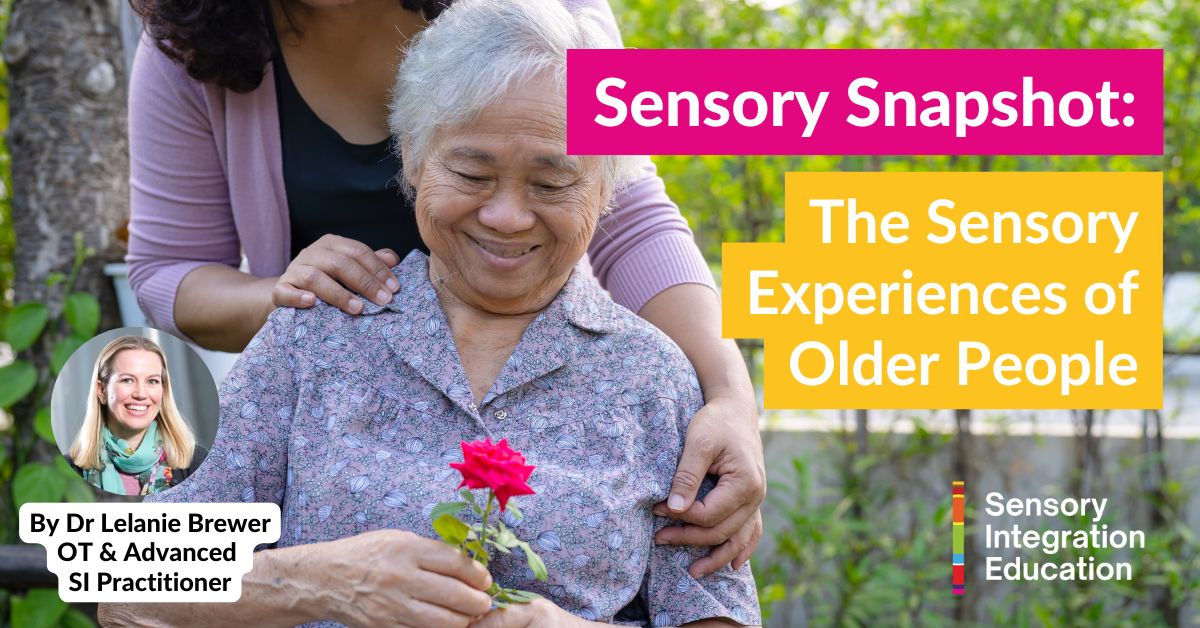Sensory Snapshot: The Sensory Experiences of Older People
By Lelanie Brewer, 18 May 2023

There has been a lot of talk recently about sensory processing in older people, ranging from reduced sensory acuity to the impact of vestibular processing differences on falls and balance. However, something that occurred to me is that sensory modulation in older adults can be easily overlooked.
Many individuals set up their home, often without realising, according to their personal tastes which can align with sensory preferences. A neutral home environment is likely to be the home of someone who does not enjoy being overloaded with sensory stimulation, whilst a home full of bright colours is likely to be the choice of someone who seeks out visual stimuli.
In our own home environment, we are also able to control scents and the volume of appliances like a radio or television to a certain extent and have a choice of food to cook or eat. As a result of the available choices and the ability to manage their sensory preferences, many adults with sensory processing differences address sensory modulation in their own way through minor modifications in life choices or the environment.
When an older adult leaves their home to enter a care home or sheltered accommodation, there is usually a focus on the safety of the individual due to falls or other mobility needs. There is a big focus, quite rightly, on patient safety and often a sense of relief when suitable accommodation has been found for an older person.
We need to remember though that this new environment can be dysregulating for many individuals, particularly those with sensory processing differences. For perhaps the first time in their adult lives, older adults with sensory modulation difficulties may have no control over their environment. Health professionals usually consider the layout of care homes but it is also useful to ask residents about their previous home when they arrive in a care home. If an individual has lived in a colourful house filled with pictures and art, a plain environment will likely be disorientating and vice versa.
For individuals who are over-responsive to sensory input, it will be important to consider strategies to deal with the sensory overload brought on by the environment, for example, strong unusual smells and the noise of other people. A useful starting point for new care home residents could be a sensory profile or sensory questionnaire so that staff have a clear understanding of residents’ sensory preferences and needs. From there on, healthcare professionals can make or recommend changes to ensure the environment does not cause distress to individuals with sensory processing differences.
As with other population groups, addressing sensory needs early on in older adults can make a world of difference and help them settle into their new environment much more easily.
Best wishes
Lelanie Brewer
PS: You may also be interested in our free course ‘Discover Sensory Processing and Integration’ which looks at how sensory processing differences can shape behaviour and experiences and their impact on people’s daily lives. Click to access the course.
Sensory Snapshot is a regular series by Advanced SI Practitioner and OT Lelanie Brewer. Lelanie gained her MSc in OT at Brunel University, London, and is pursuing a PhD with Newcastle University. Experienced in the NHS, charity and private sectors, as well as being a UK university senior lecturer, Lelanie is the Lead for Continuous Professional Development at Sensory Integration Education.

